Michael stayed on the boat on Saturday. I visited two main sights: Castell de Bellver and Catedral-Basílica de Santa María de Mallorca.
Bellver Castle is undoubtedly one of the most original, emblematic buildings in Mallorca’s history. It was built between 1300 and 1311 on the instructions of the King James II of Mallorca. However, the criterion behind the construction of Bellver Castle was defensive strategies planned by the Royal House of Mallorca. It was also conceived as a fortified palace where governors could safely take refuge in times of jeopardy and the monarchs used for longer or shorter stays.
It has a very specific original design, made up of a Gothic building that forms a perfect shape, with four big towers facing the four points of the compass. The keep faces north and it is separate from the rest of the castle, while the other towers are buttressed to the main body.
Some of the most remarkable architectural features on the outer façade of Bellver Castle are its arched mullion windows. Found on the upper story, they comprise two narrow semi-circular arches separated by a column. This kind of window, which can also be found inside the building, is fairly typical of Palma’s medieval architecture.
Work on the first moat that surrounds the castle was carried out in 1330. The moat prevented enemies from invading the castle, while also increasing its relative height. After this alteration to the castle, it saw few modifications. Only an outer ravelin surrounding the first moat and the third curtain wall were added, both related to the introduction and development of artillery on the island.
Okay, do you know what a ravelin is? I did not. This is the definition: “A ravelin is a V-shaped fortification built outside a castle’s main ditch to cover the area between two bastions. It has two embankments at a salient angle, and is located in front of the innerworks of a fortress, such as the bastions and curtain walls. The word ravelin comes from the Italian word rivellino, which is a diminutive of the word riva, meaning “rim” or “bank”. The word originated in Middle French between 1580 and 1590.”
Google Maps took me through town first, then on a nice little nature trail, then to the stairs. There are more stairs than pictured below.
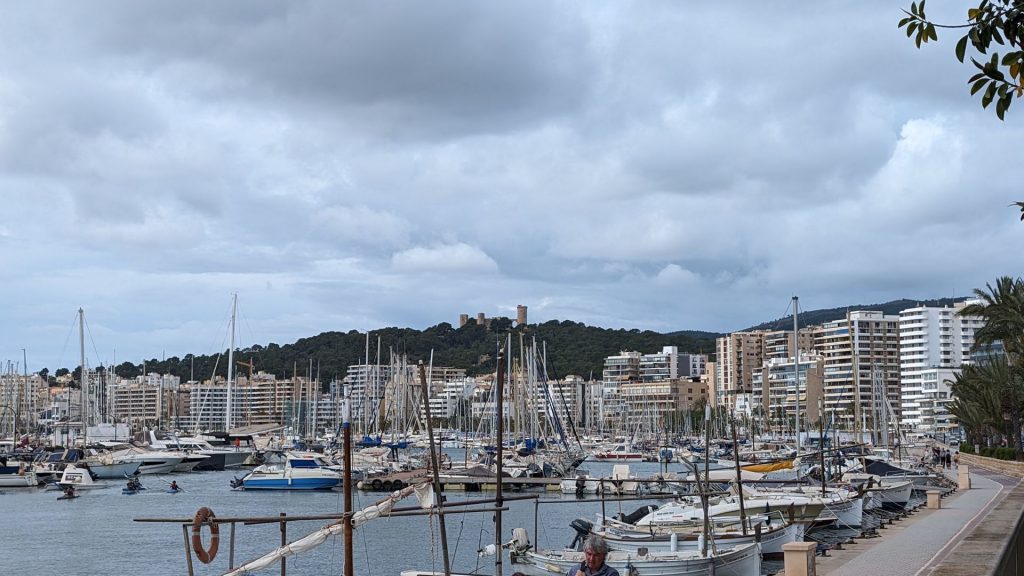
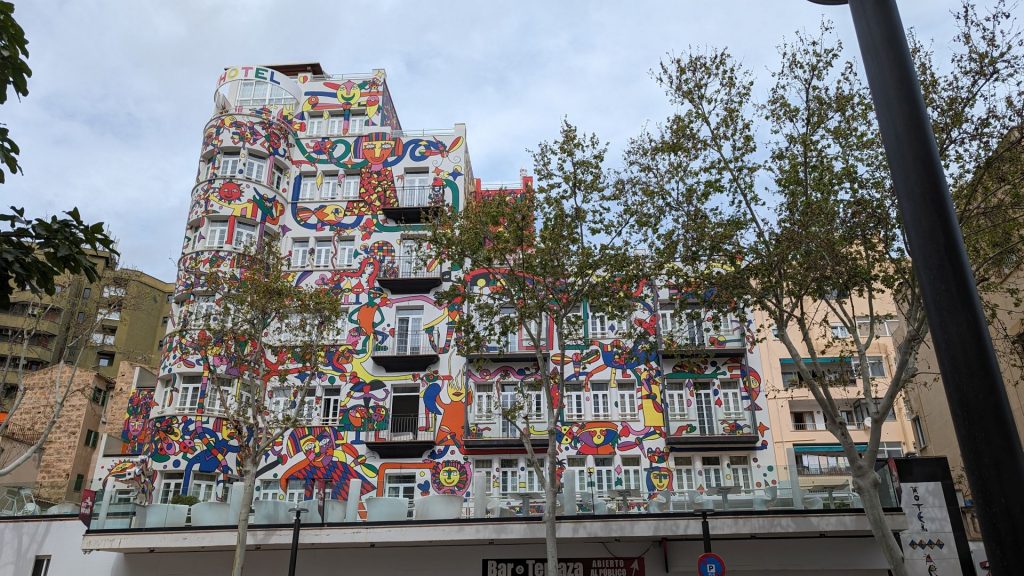
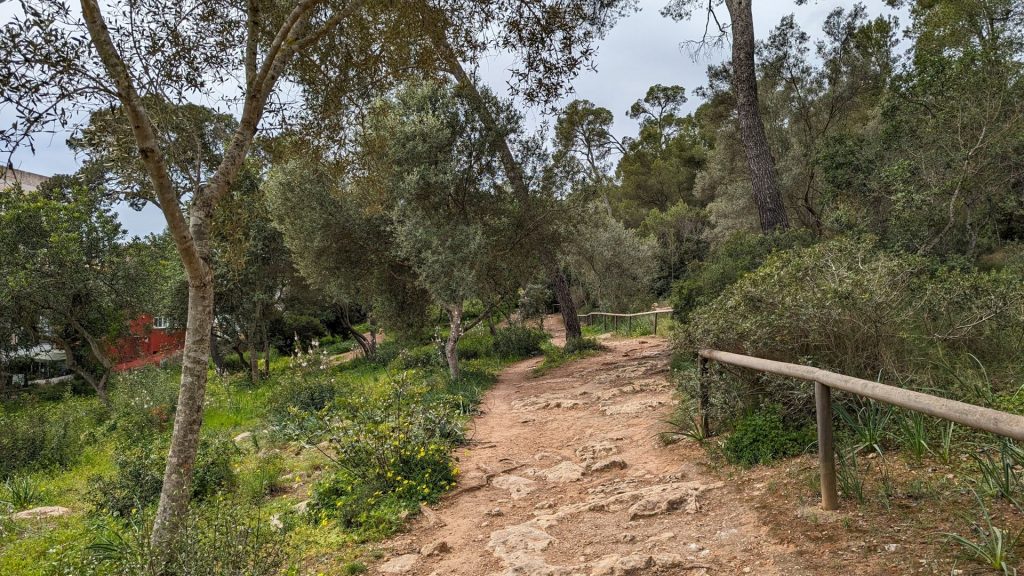
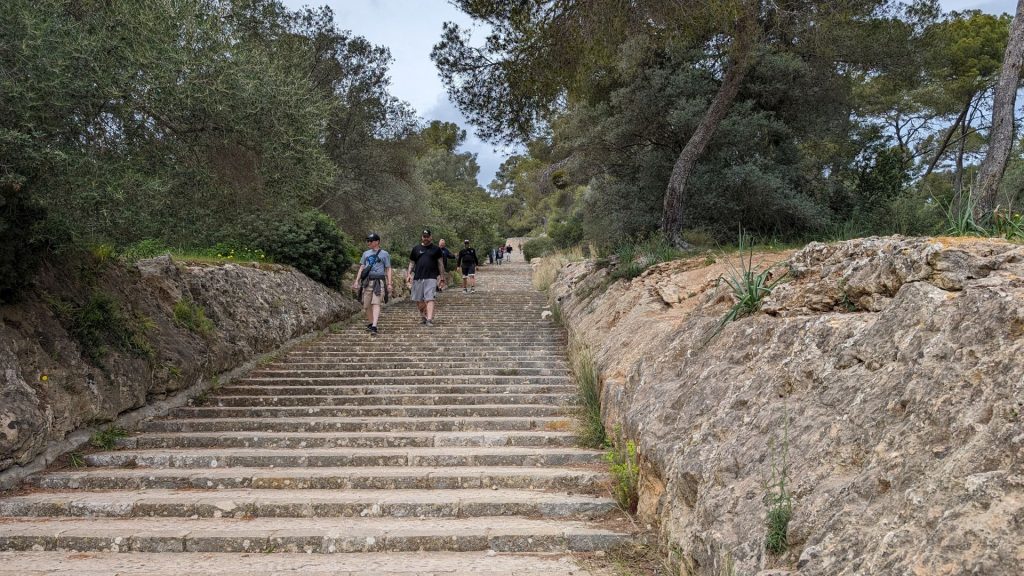
I am sharing an external picture of the castle from the air from a website with free images (I am not being naughty). It is the only way to get a good idea of the structure. The other photos are mine.
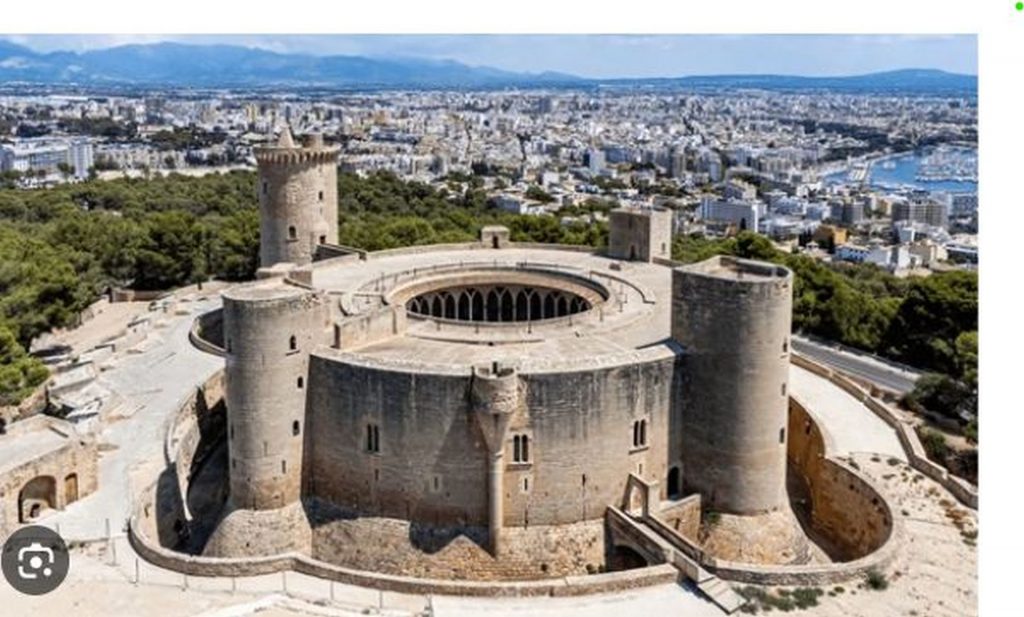
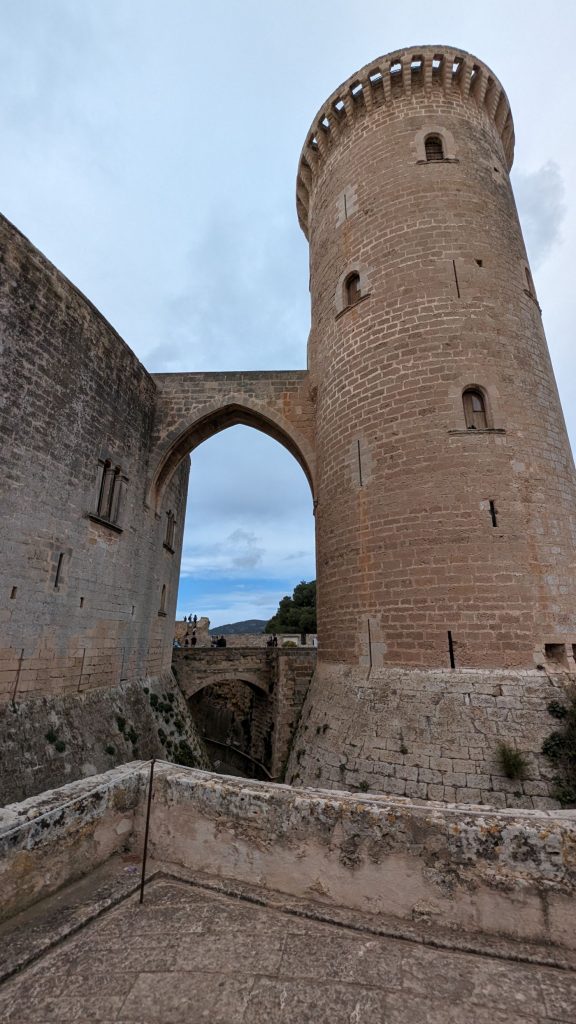
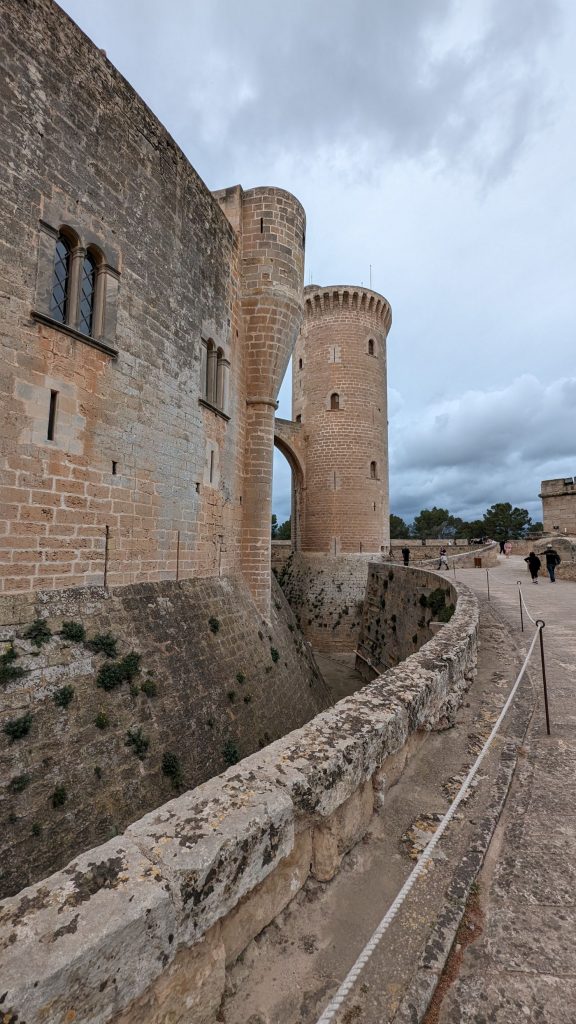
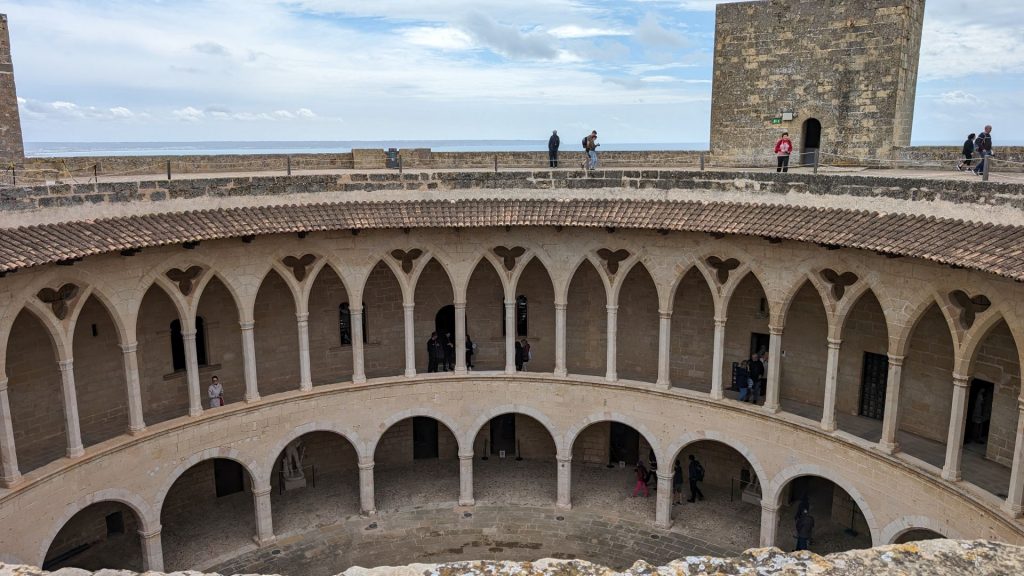
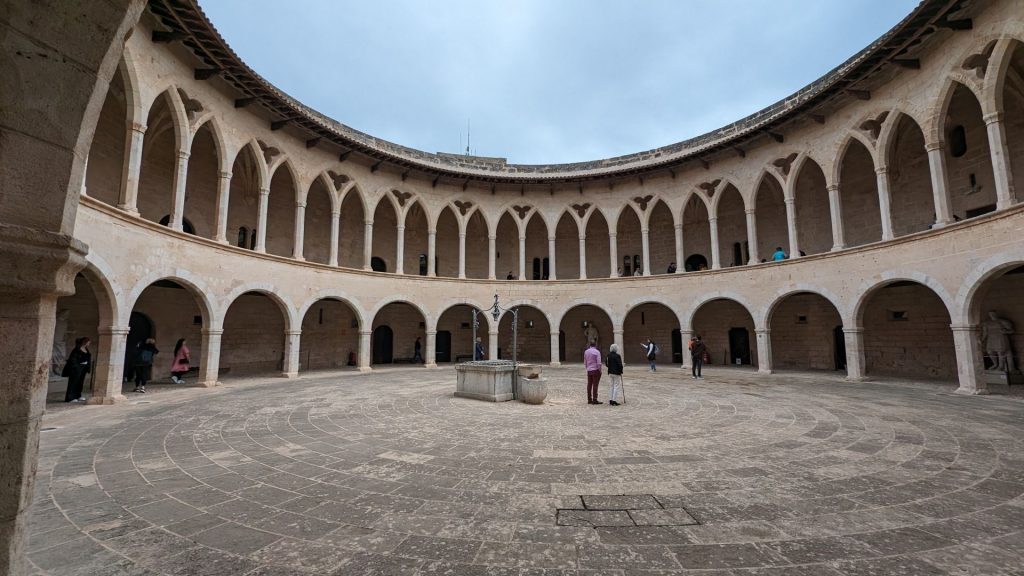
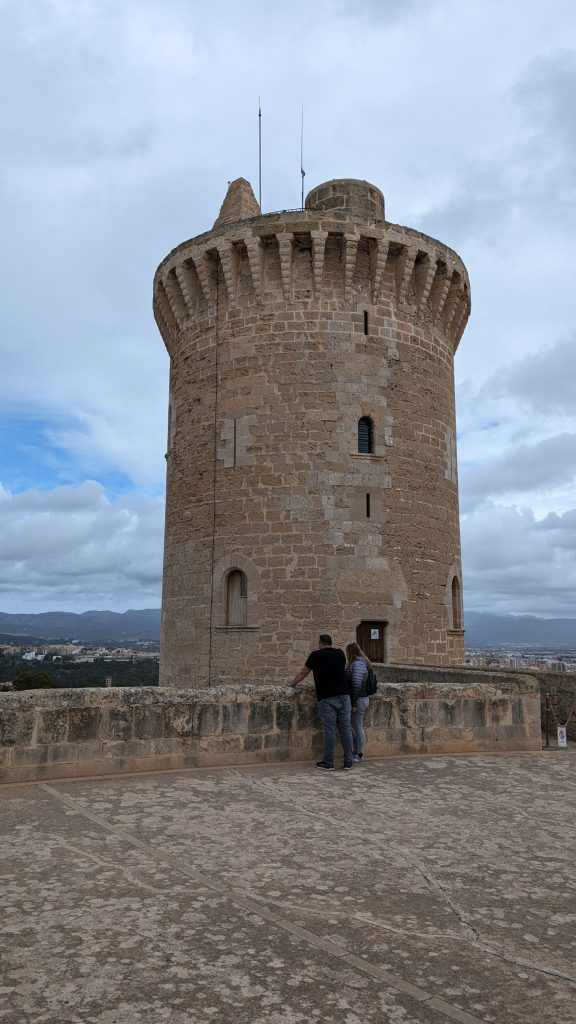
As per usual, the views on the way to and from the castle were lovely.
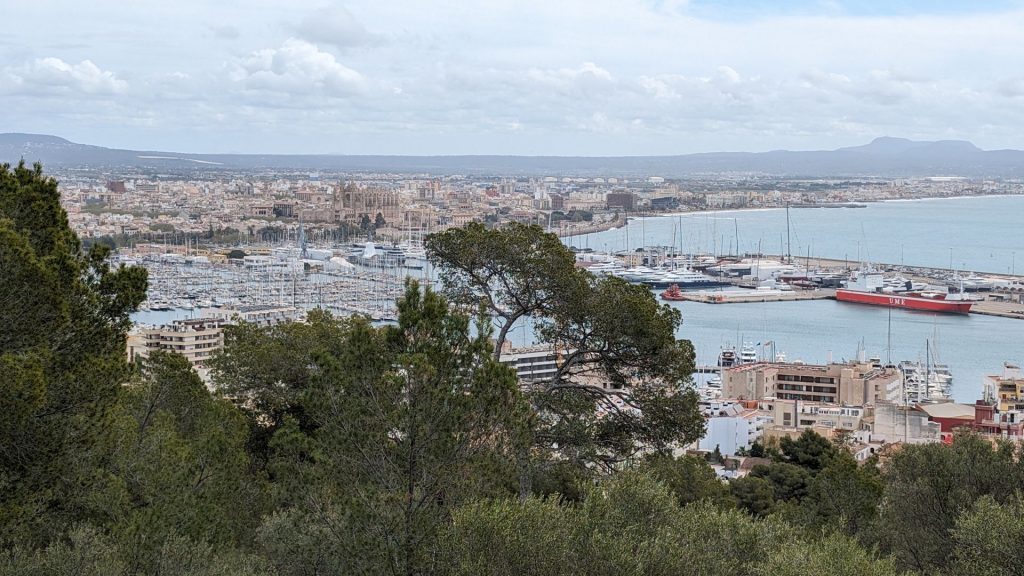
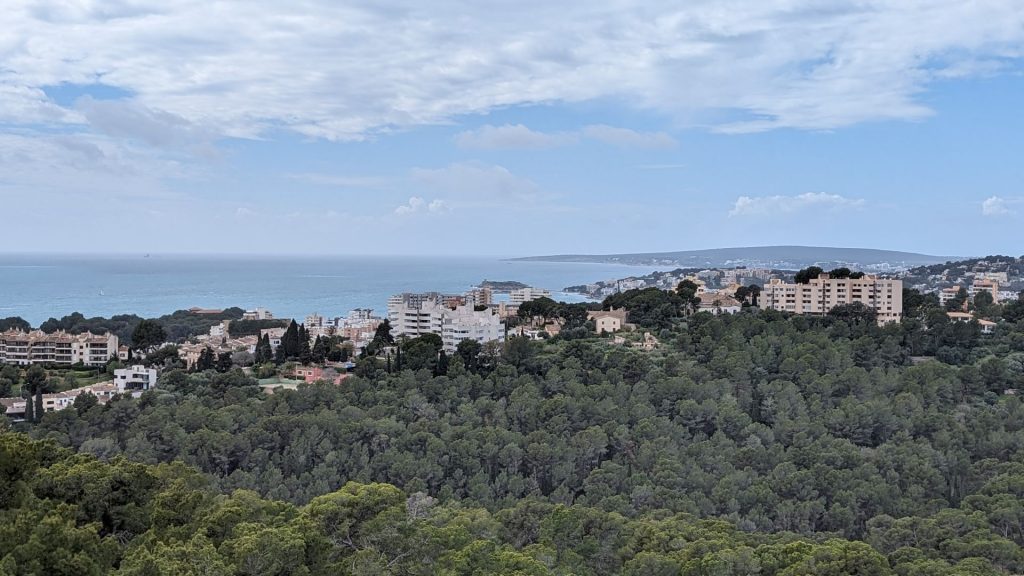
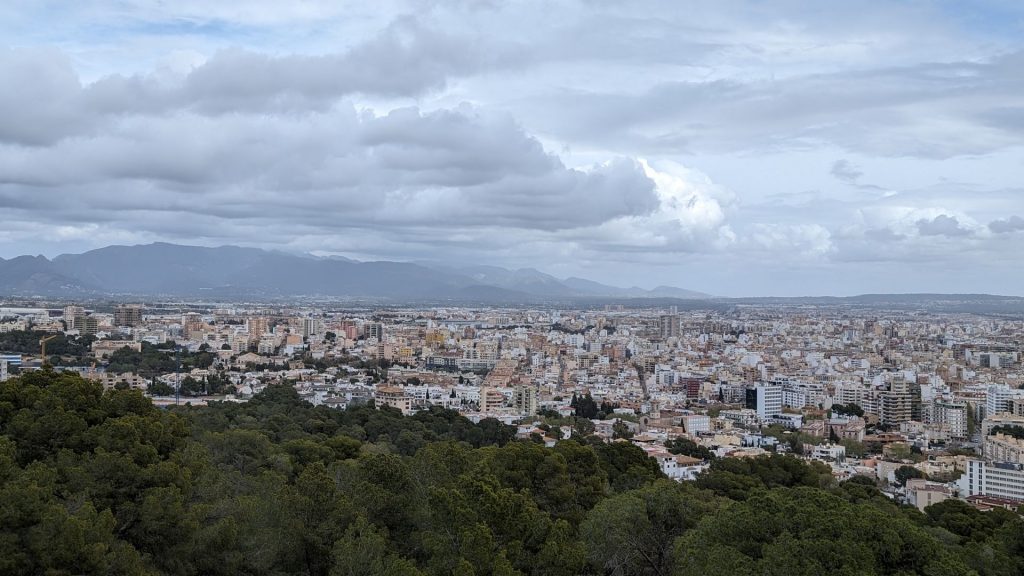
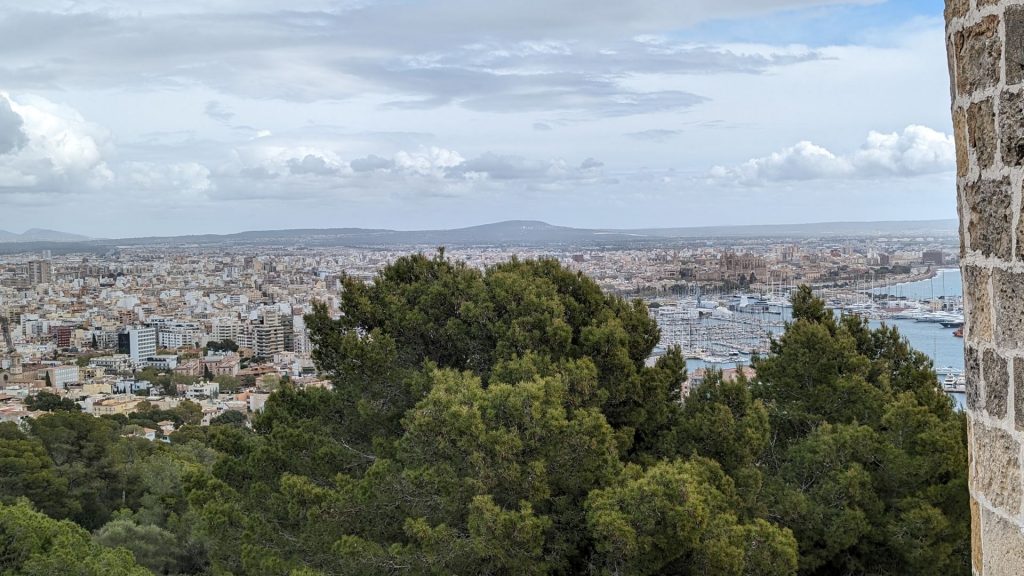
The next stop was the Catedral-Basílica de Santa María de Mallorca. We’d seen it many times from the outside, but this was my first opportunity to see it from the inside. And, boy, was the inside stunning!
Here are some random bits of information about the Cathedral.
The construction of the Cathedral began in the 13th century and was completed in the 1630s. The history of the Cathedral is closely linked to the native monarchy. After the conquest of Madina Mayurqa in 1229, James I, king of Aragon and count of Barcelona, ordered the consecration of the old main mosque to the Virgin Mary as a temple for Christian worship and also the construction of a new floor of another temple that It was in accordance with the style of that time, taking advantage of part of the space of the old mosque. The Cathedral belongs to the Mediterranean Gothic tradition, but over the centuries, it has incorporated the cultural forms of modern and contemporary times.
Some of the Cathedral’s towers reach over 20 meters and the Cathedral contains one of the largest stained glass windows in the world (with more than 1,200 pieces). The sight, also known as La Seu, has a baldachin or canopy over the altar by Gaudí, and an unusual chapel representing the miracle of the loaves and fishes designed by contemporary Mallorcan artist Miquel Barceló. The legacy of Gaudí’s work has traveled throughout the 20th century in the process of opening the stained glass windows and in the artistic updating at the service of the liturgy.
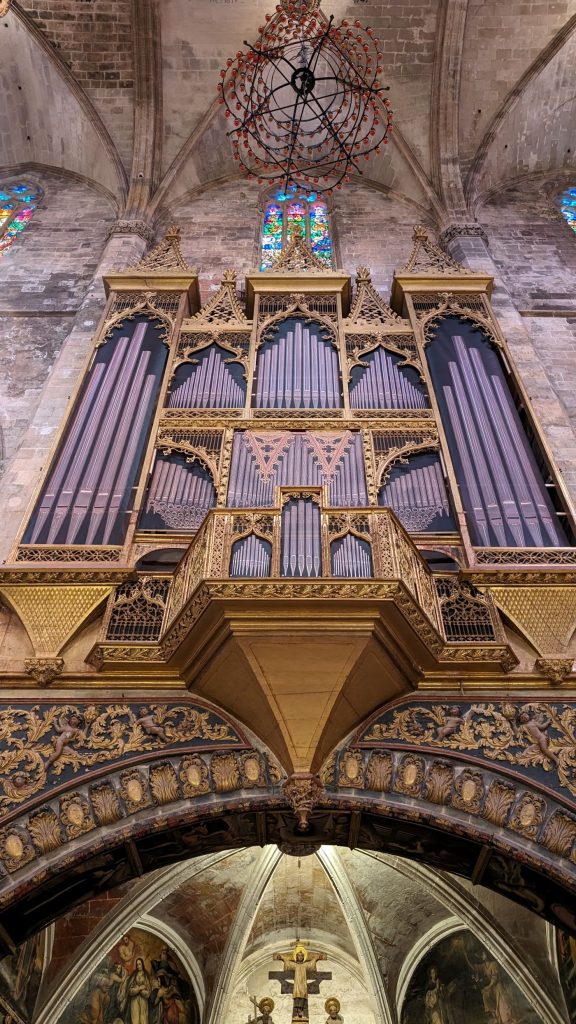
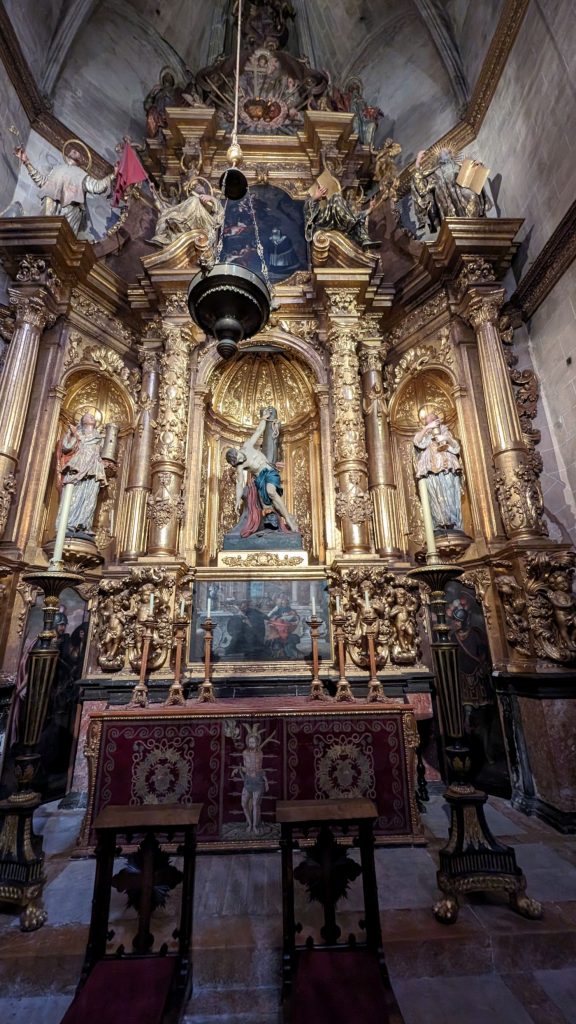
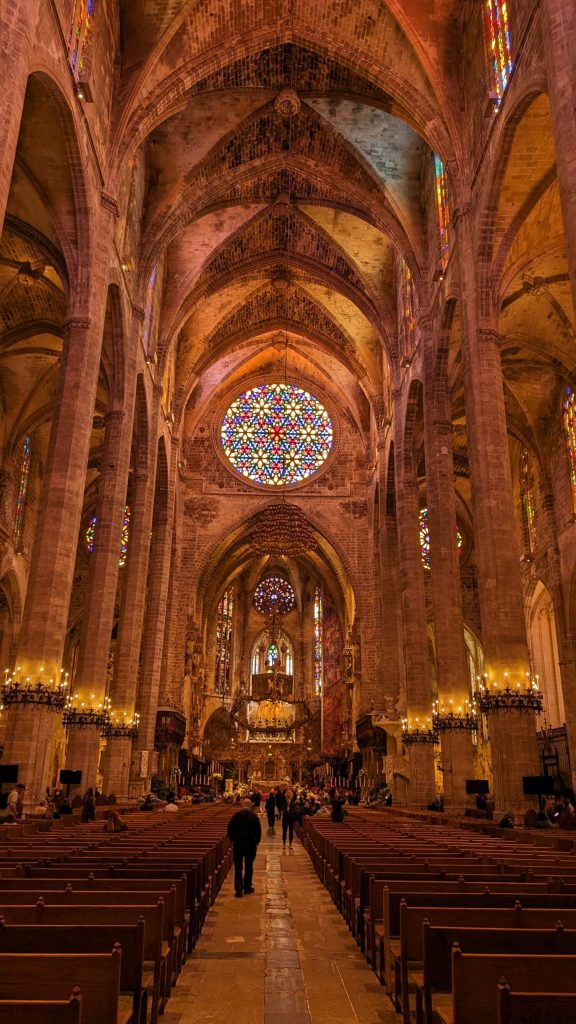
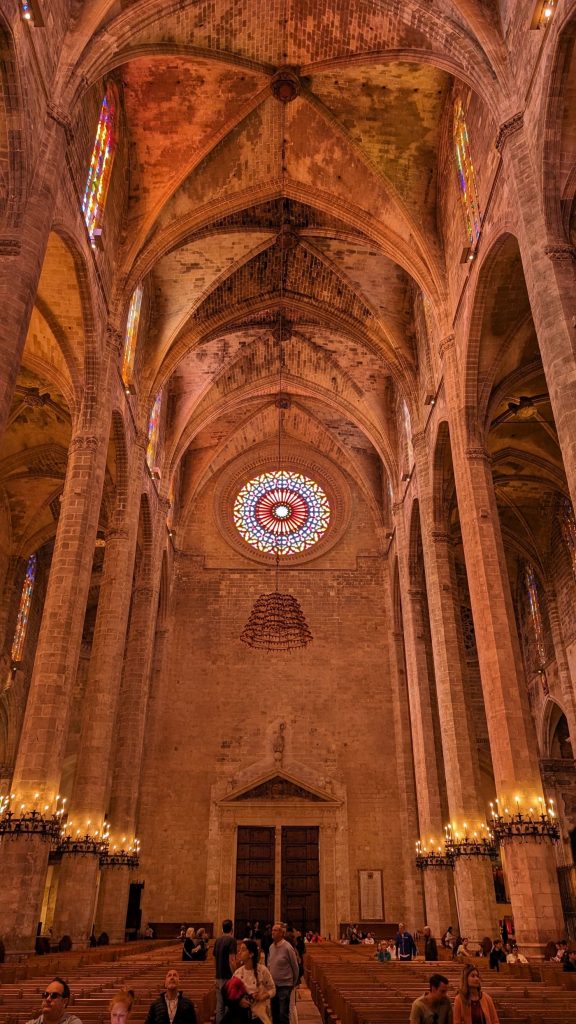
This next chapel was one of my favorites because it includes the Lady of Navigation. She is holding the Christ Child in one hand and a boat in the other. Cool!
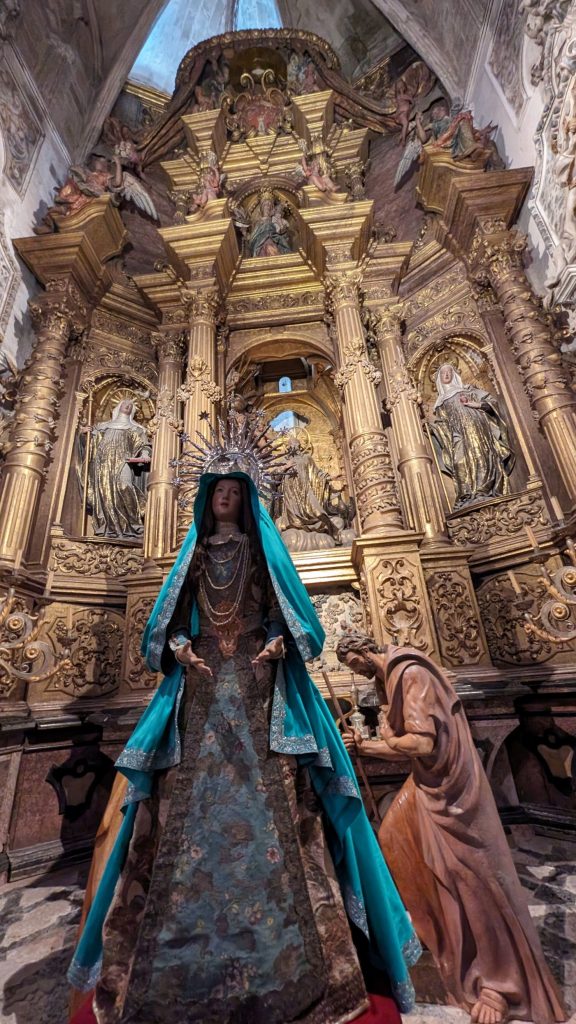
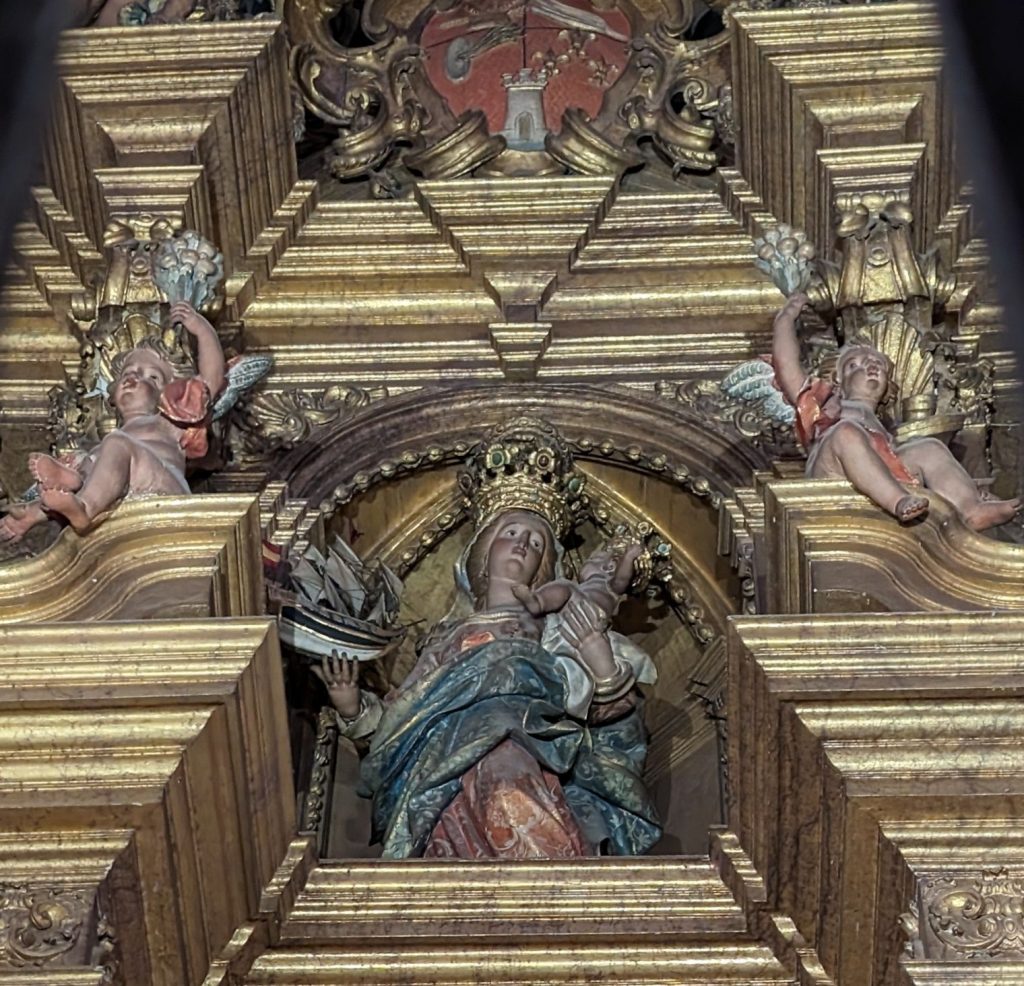
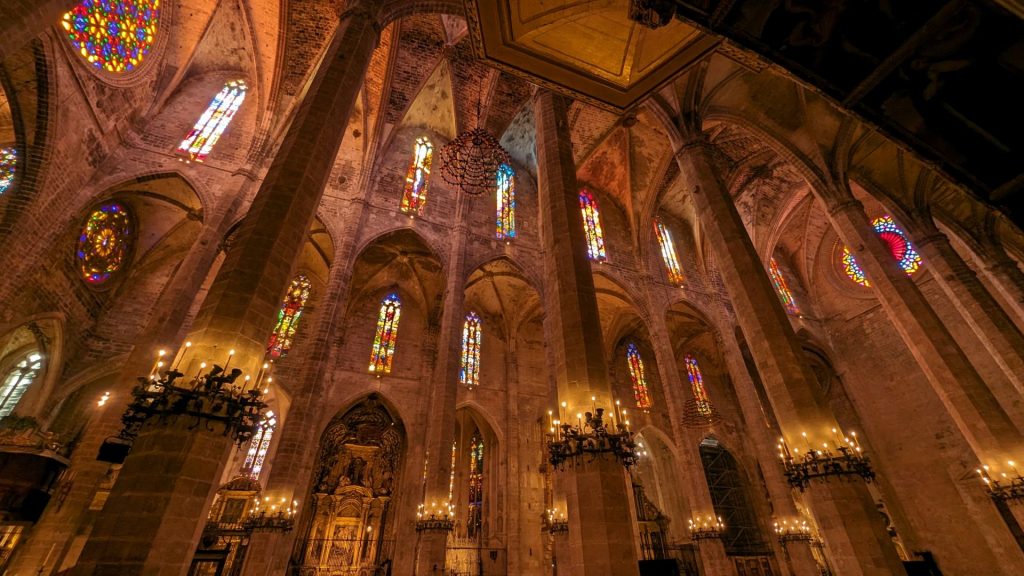
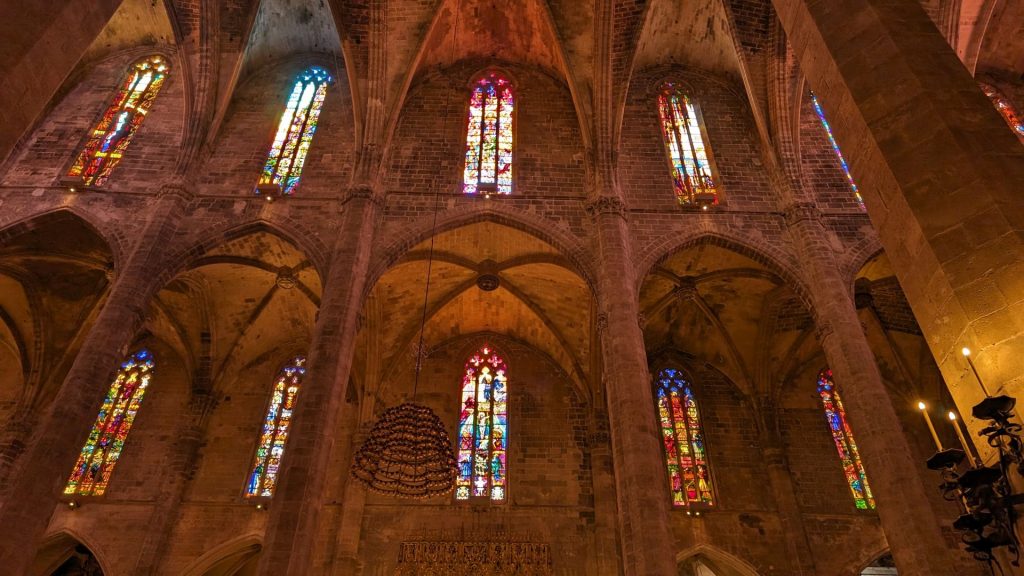
The next four pictures are of the “unusual chapel” mentioned above, representing the miracle of the loaves and fishes designed by contemporary Mallorcan artist Miquel Barceló. It was hands-down my favorite chapel due to its appearance. I must admit that I felt like I was in a sci-fi movie, though.
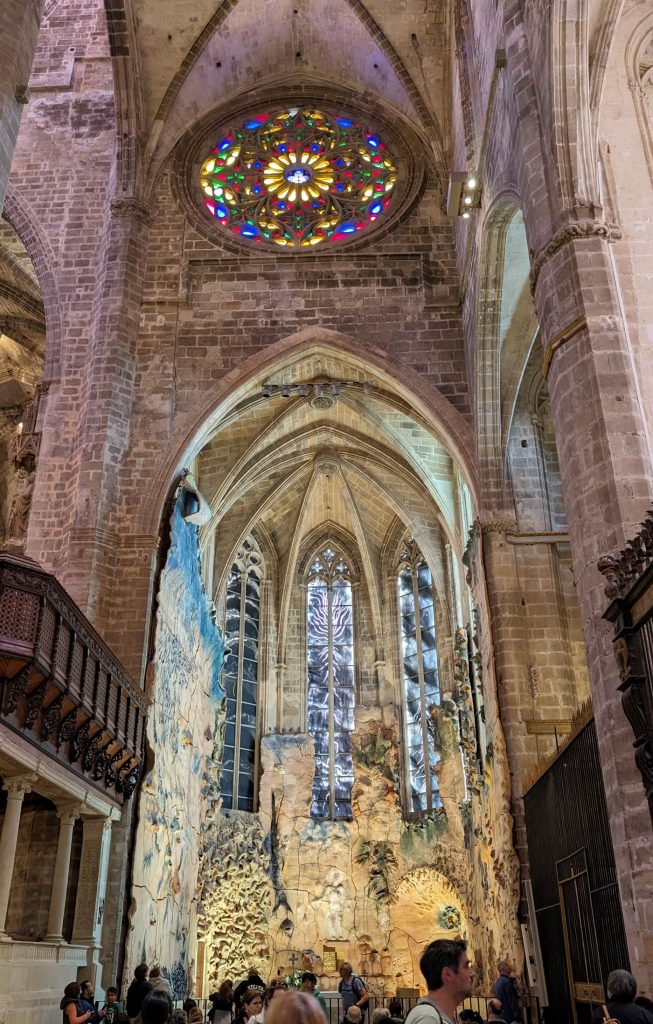
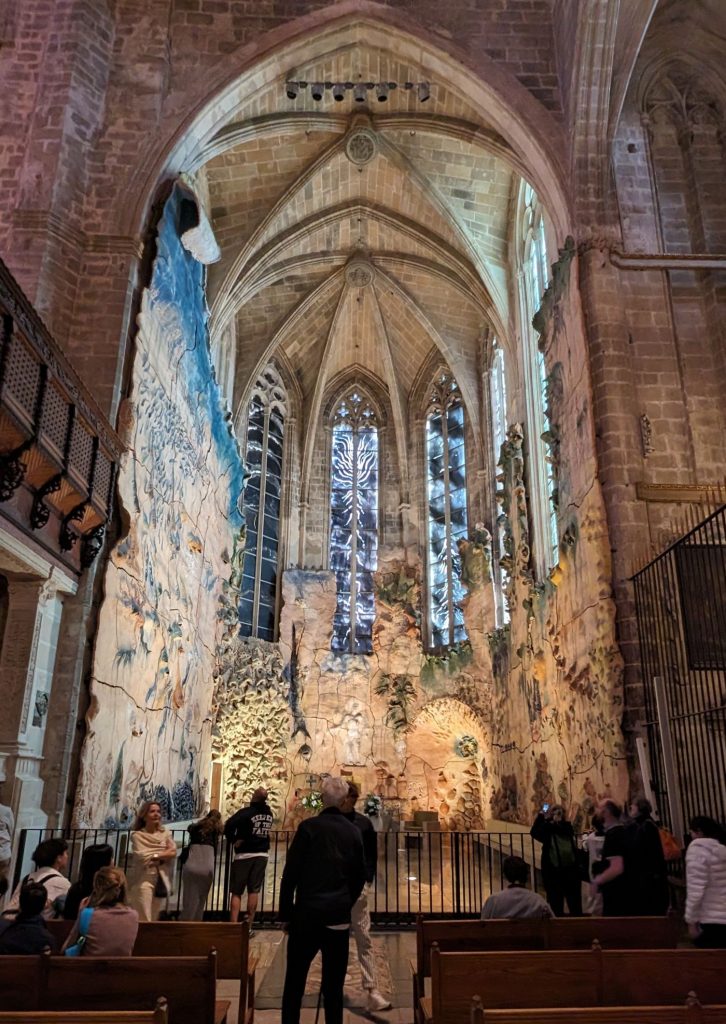
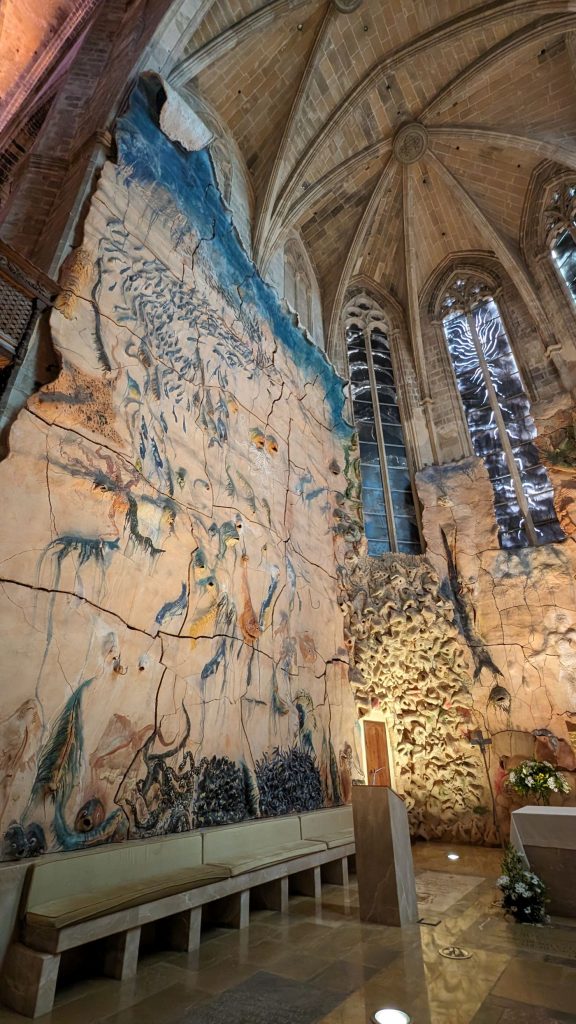
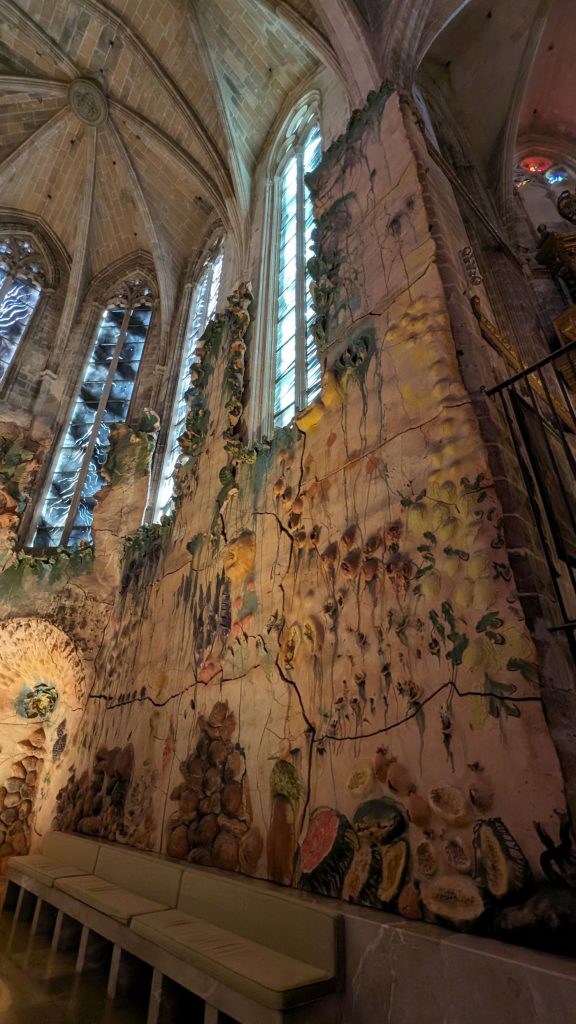
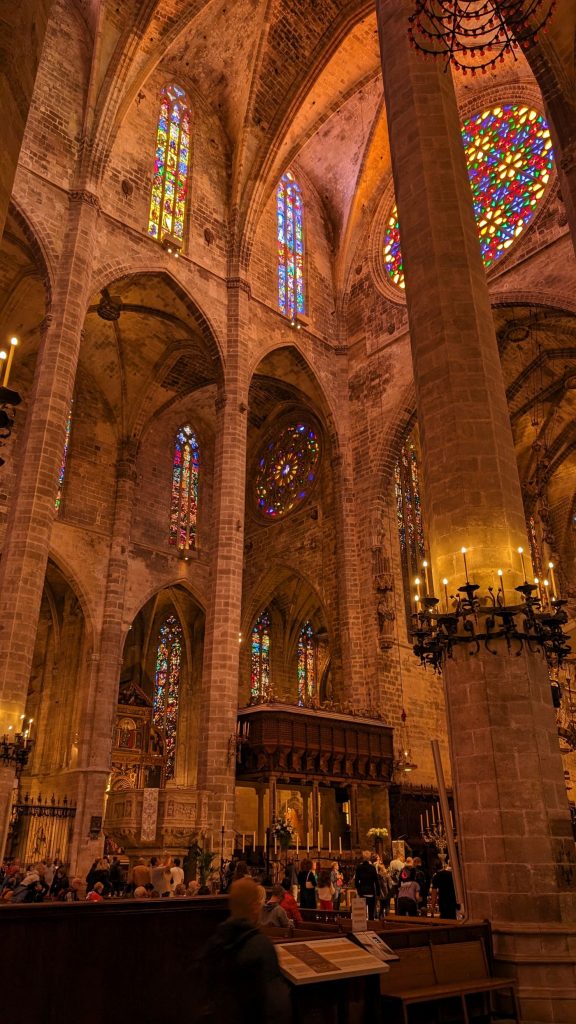
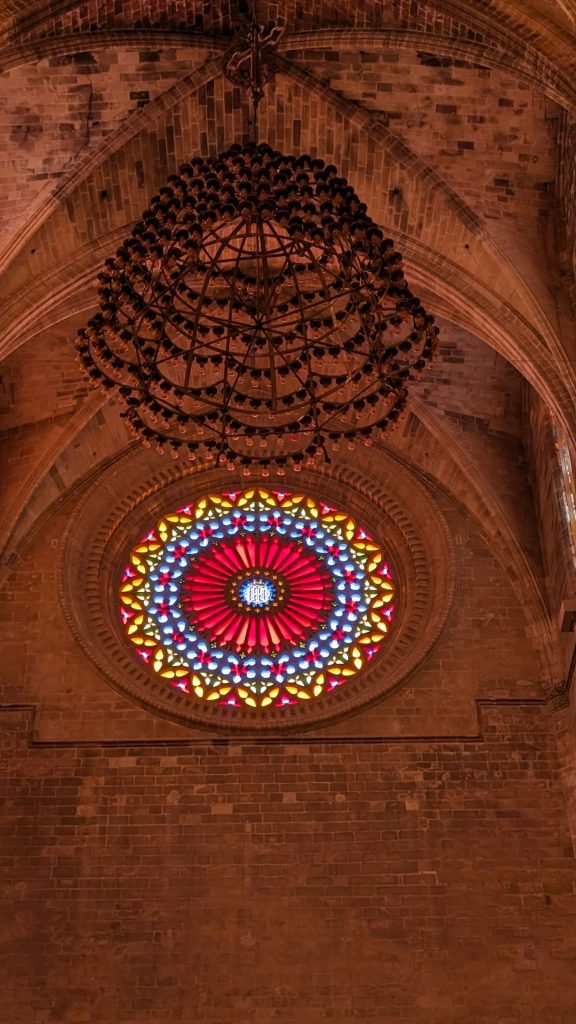
The next few pictures include the baldachin over the altar by Gaudí. I had never seen one of these before and I was quite taken by it. In case you are wondering where/what it is, it is the big thing hanging from the ceiling. It sort of looks like a crown, but it isn’t round. (I am not Catholic, for those who might wonder. I just thought you might want to know. It is of no consequence.)
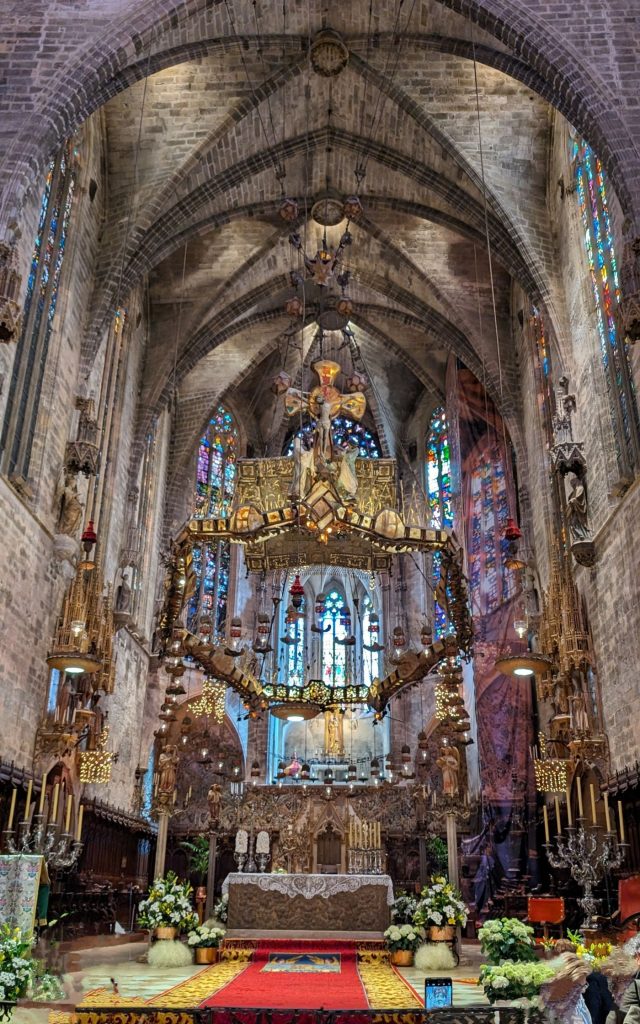
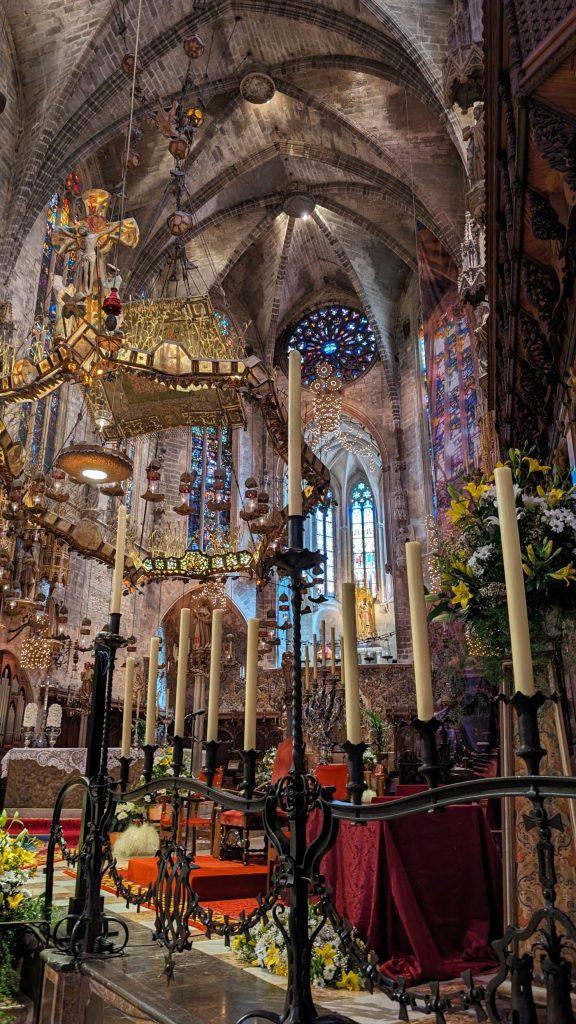
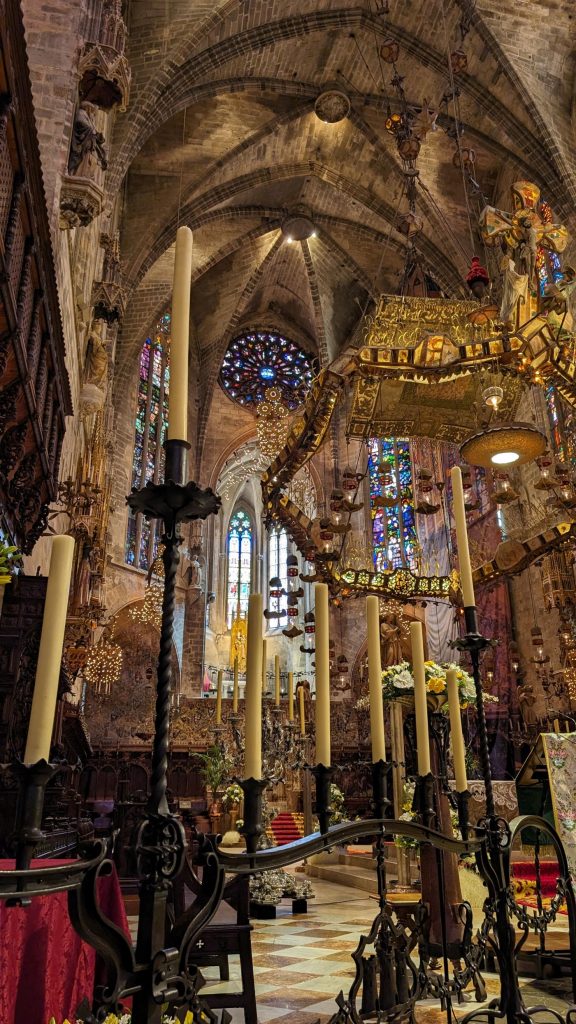
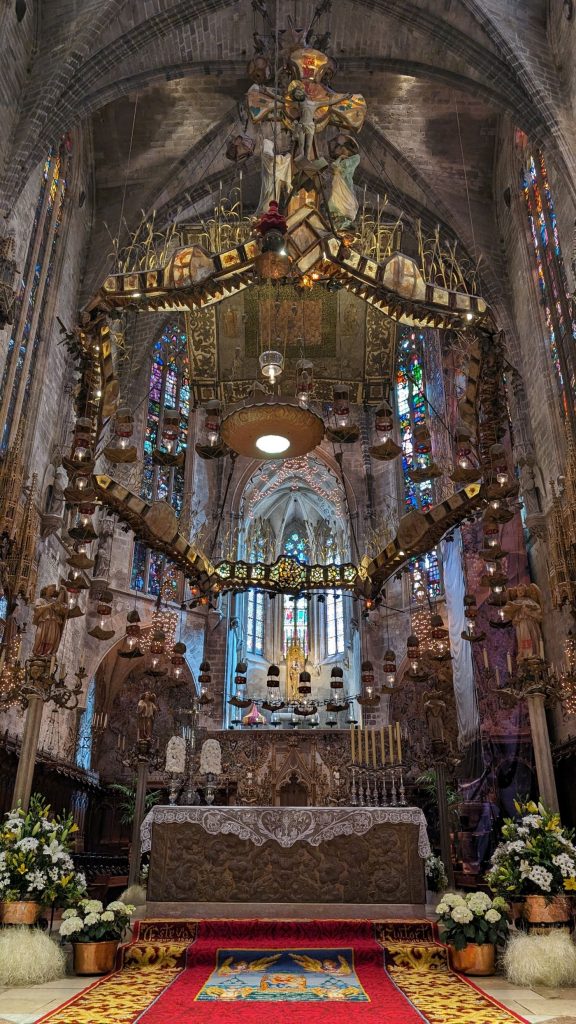
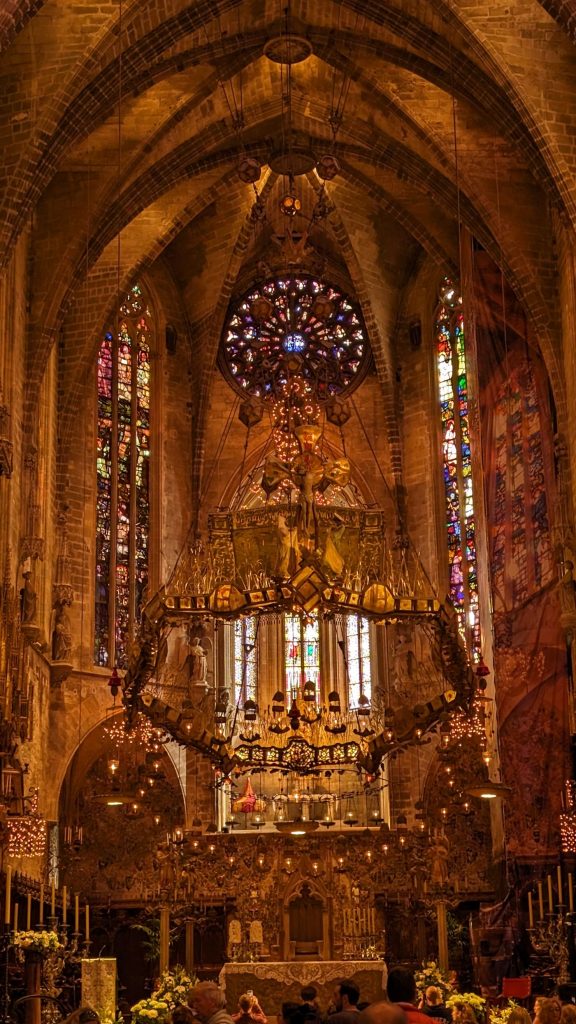
Just a few more pics . . .
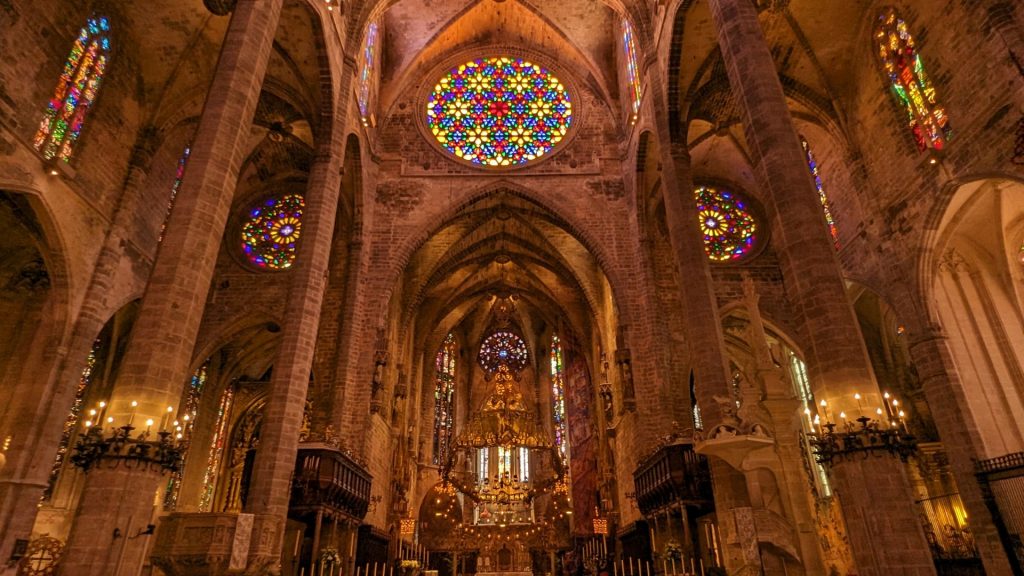
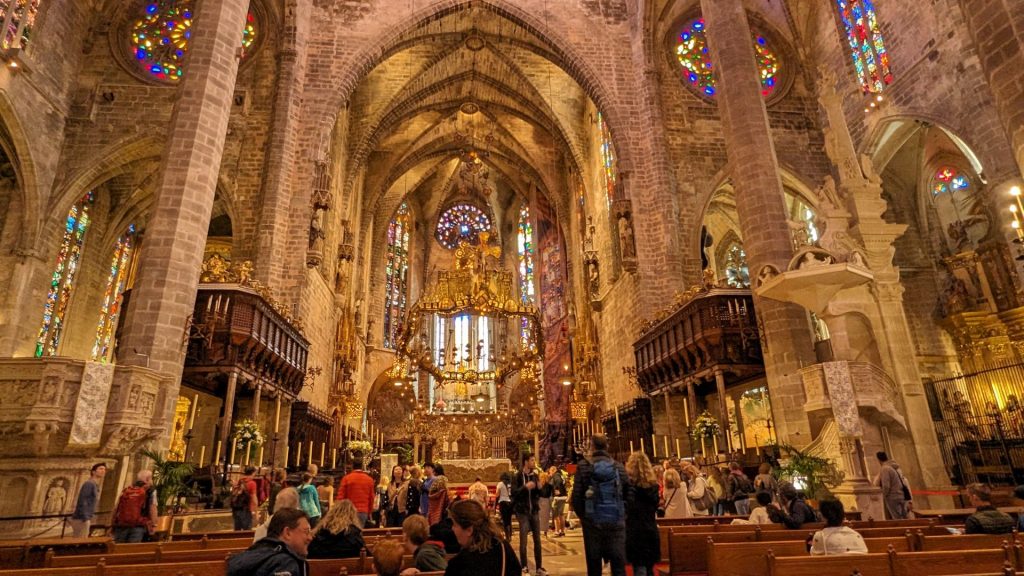
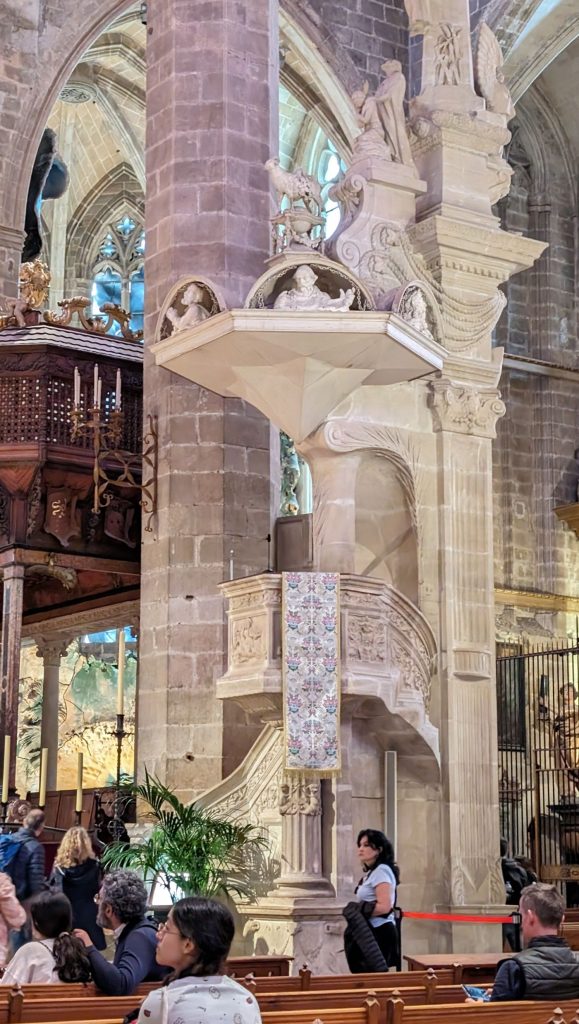
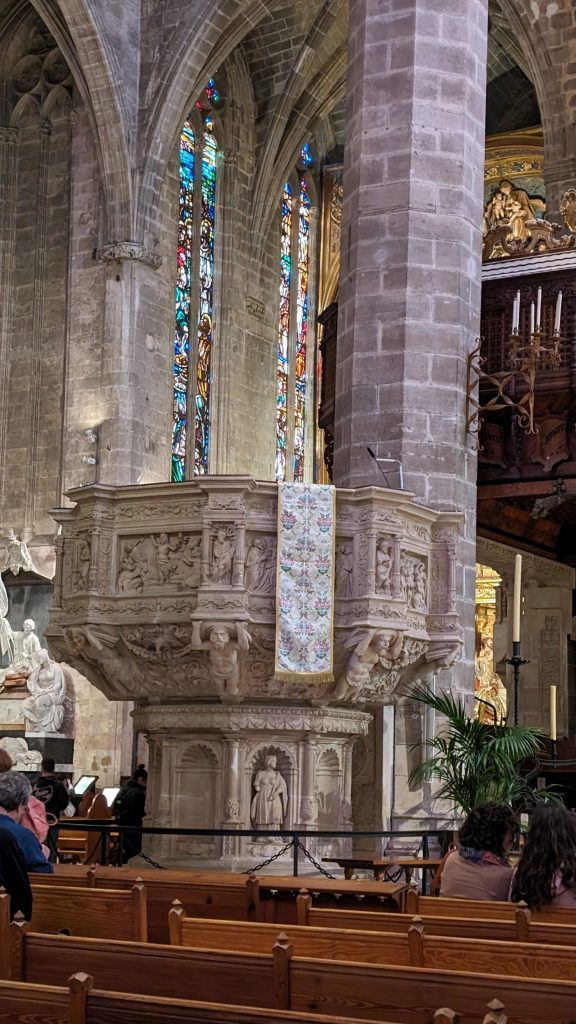
Okay, I am guessing you’ve seen enough of the interior of the Cathedral! 😉
I was quite hungry by this point so I had some lunch at a restaurant very near to the Cathedral. I noticed that the numerous tents we’d seen our first day in Palma (and when we watched the runners finish their race) were now open. It was an art fair!! I thoroughly enjoyed visiting the various booths and smelling the yummy aromas from those selling food. I didn’t buy anything, but it tied a bow on my already perfect day!
I took myself on a walk to Portixol on Monday. I’d read that it and a nearby town were places one might visit. I mostly wanted to walk, and it was nice to have a destination. Boy was it windy that day! The wind actually blew me (and others) around a bit. The most enjoyable thing for me was watching the waves coming in off the sea. Of course, I love the sea, so. . .
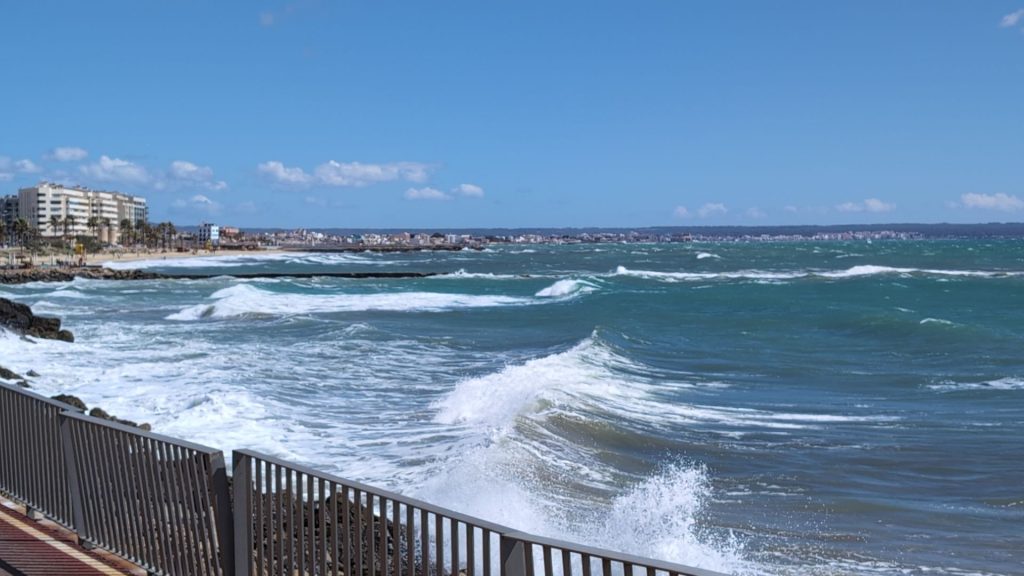
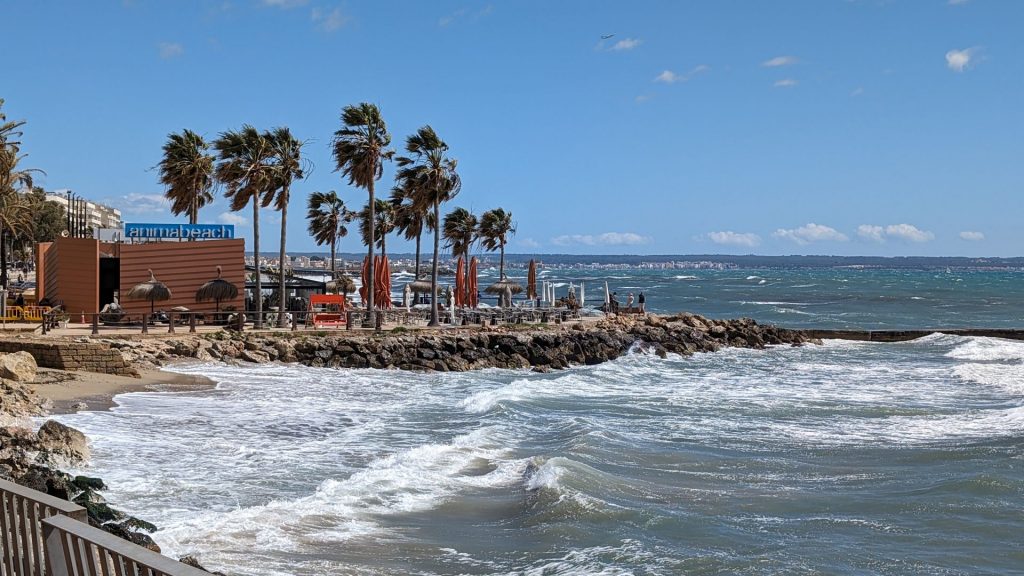
I should mention that in addition to wanting to get out and about, I wanted to see the statue of a woman called Nuredduna. It was created in 1975 by the Mallorquin artist Remigia Caubet, an iconic figure of Mallorca.
There is a haunting story behind it.
Nuredduna fell madly in love with Melesigeni. He spoke a foreign tongue and she could not understand his words. However this was not necessary as they communicated through music; he played the lyre and sang, while she, hopelessly in love, disobeyed her people and helped him to escape. The tribe could not forgive her for this treachery and Nuredduna was sentenced to death by stoning, accused of aiding the Grecian Melesigeni to escape. Mortally wounded, Nuredduna managed to drag herself to the cave where she had hidden her beloved and there her body was found, holding the lyre, the instrument that spoke the universal language, the language of love.
A most beautiful representation of Nuredduna is Remigia Caubet González’s statue. She is looking out to sea, waiting for her beloved to return.
See, I told you it was haunting. The statue is beautiful!!!
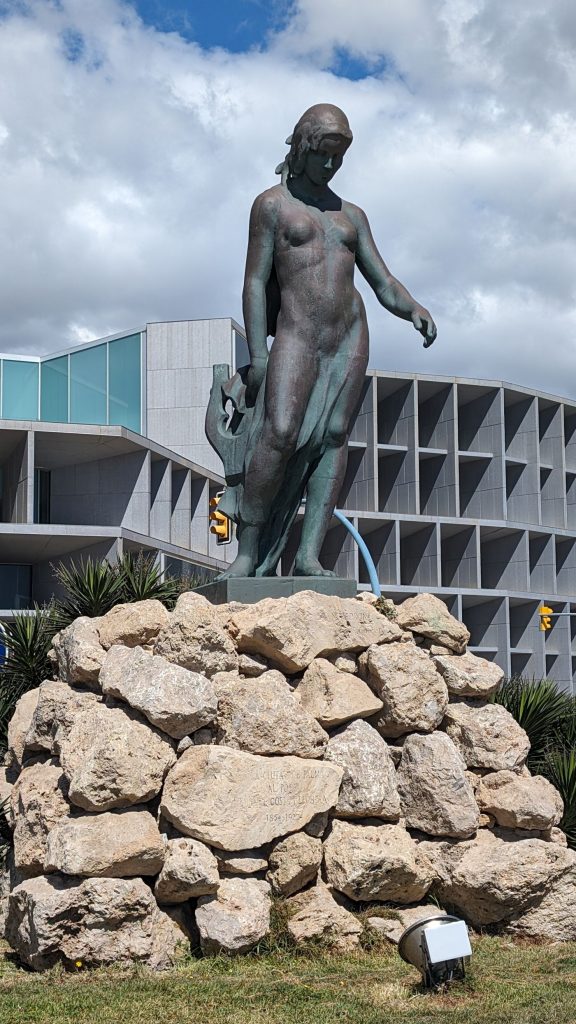
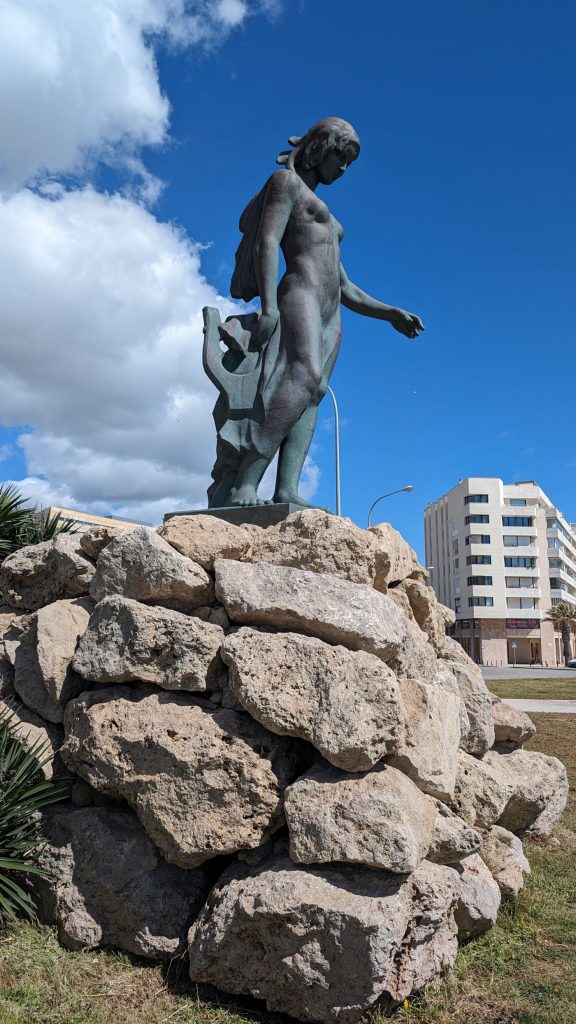
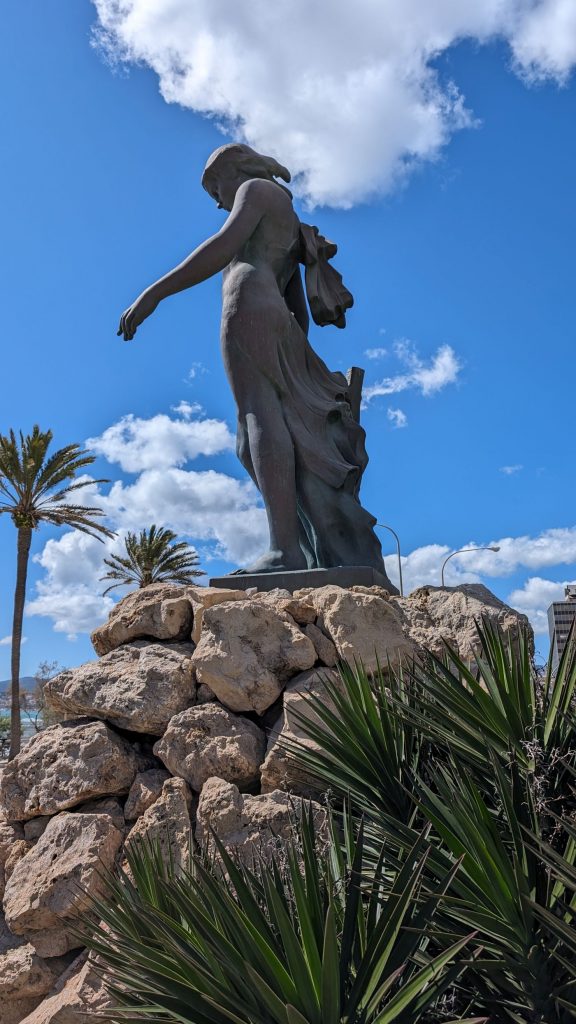
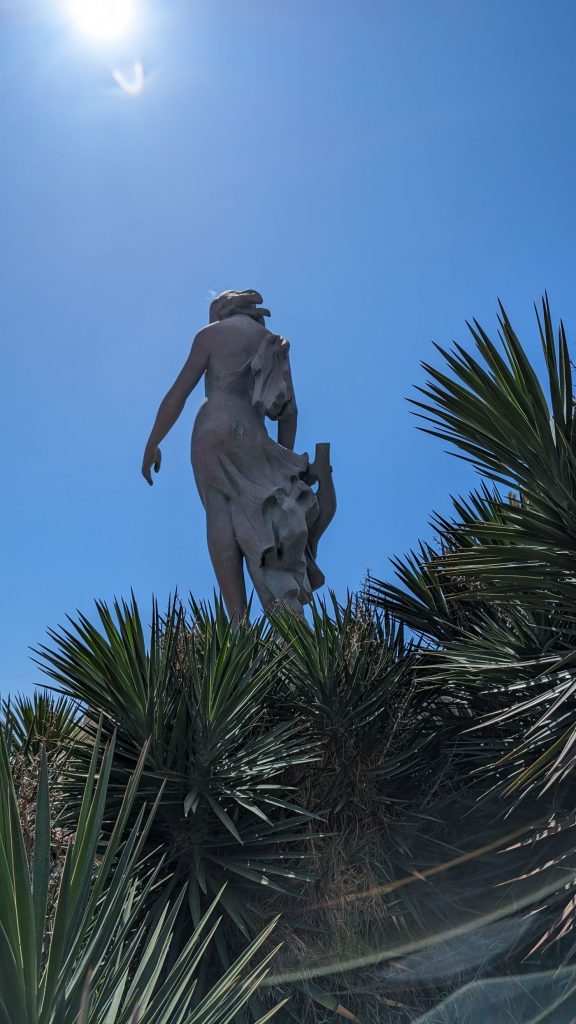
I arrived in Portixol. I didn’t see that there was a lot to do and it was happy hour time so I had a glass of wine at a hotel restaurant/bar. The hotel is near a marina. Here are some pics of the marina and from my windy walk back to Seahike.
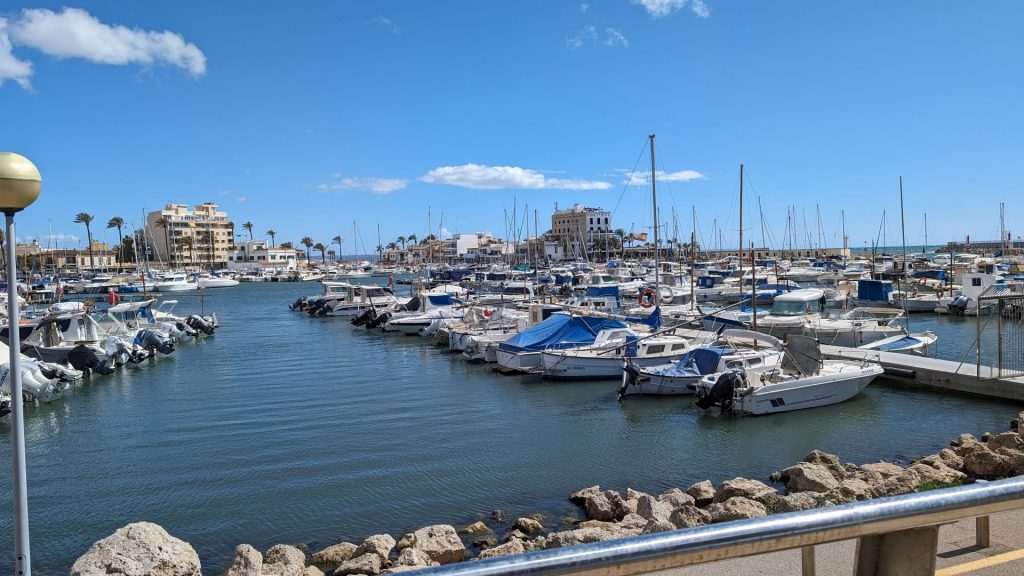
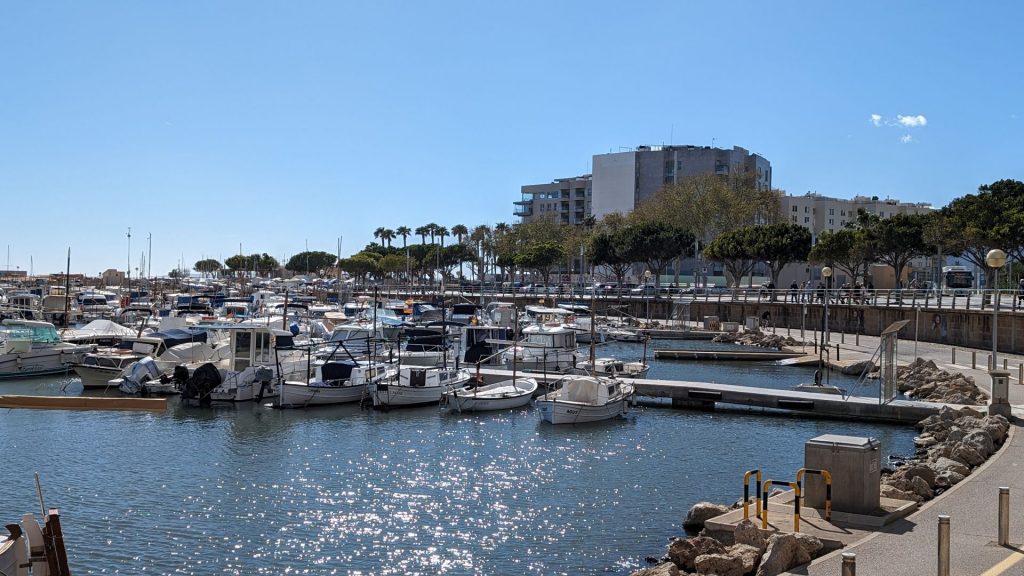
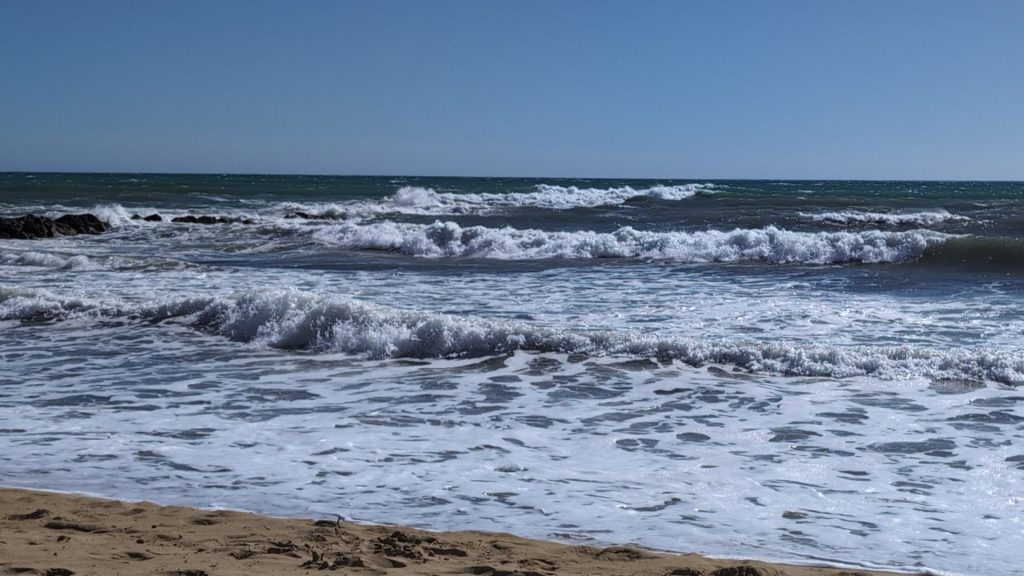
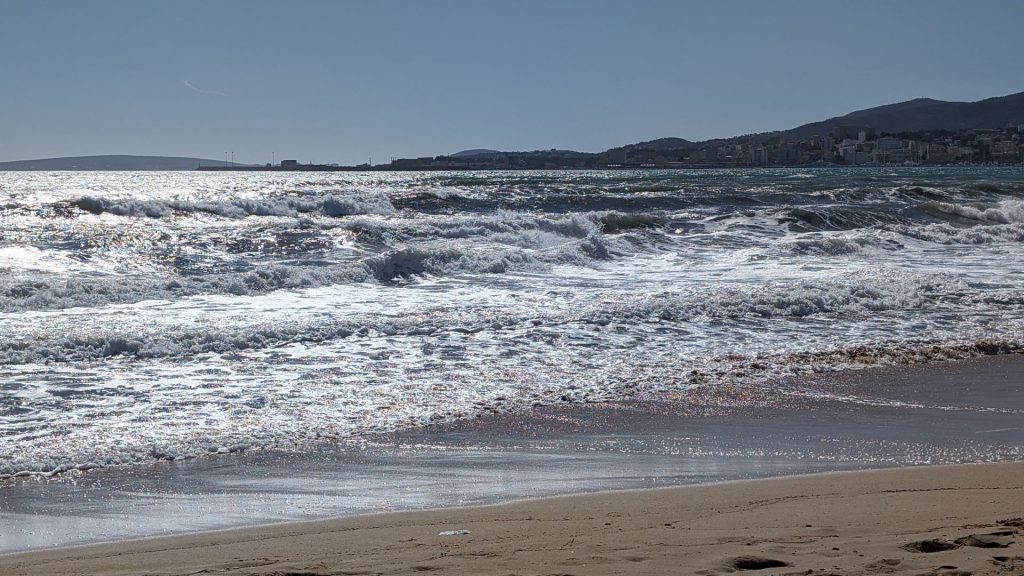
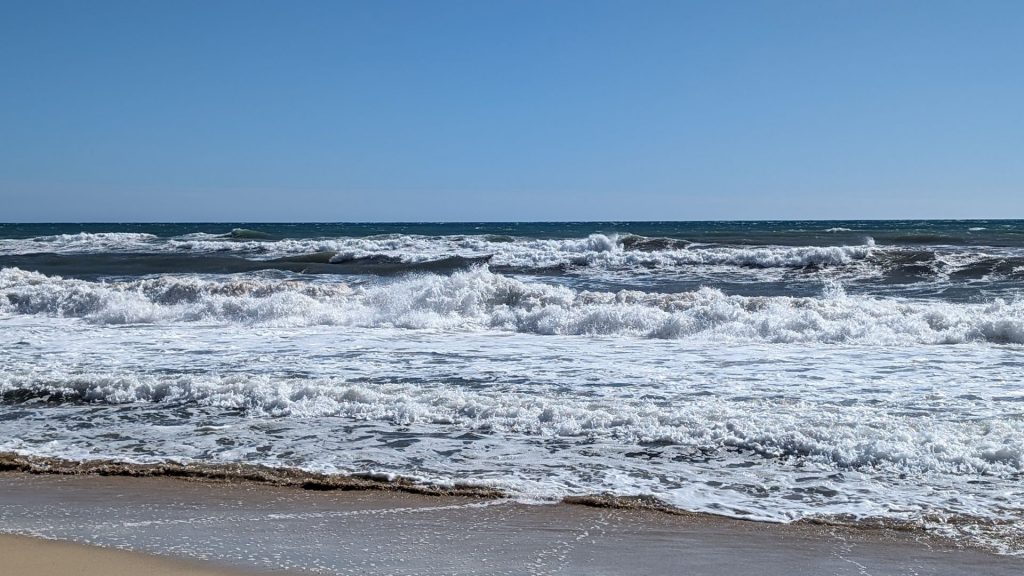
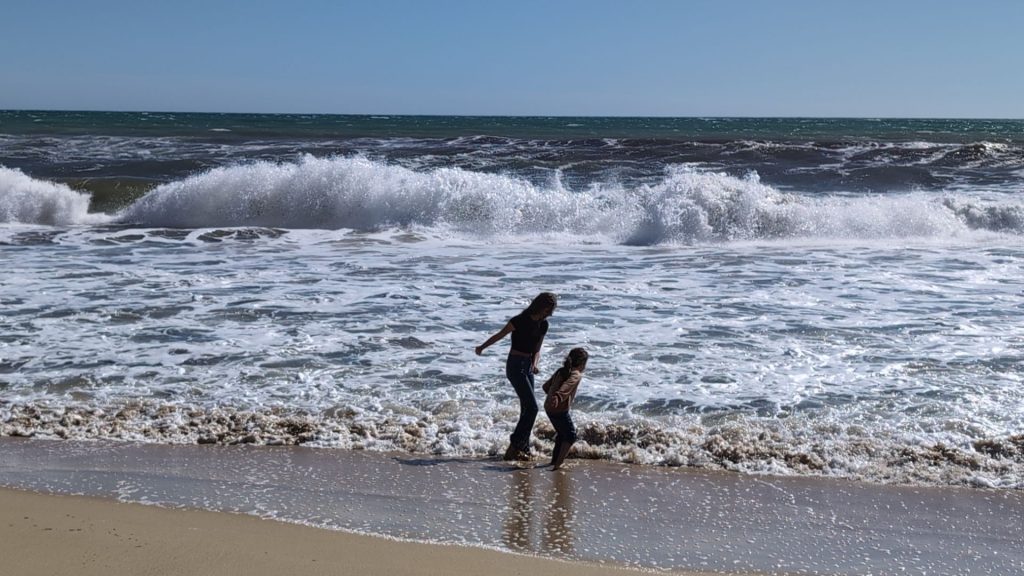
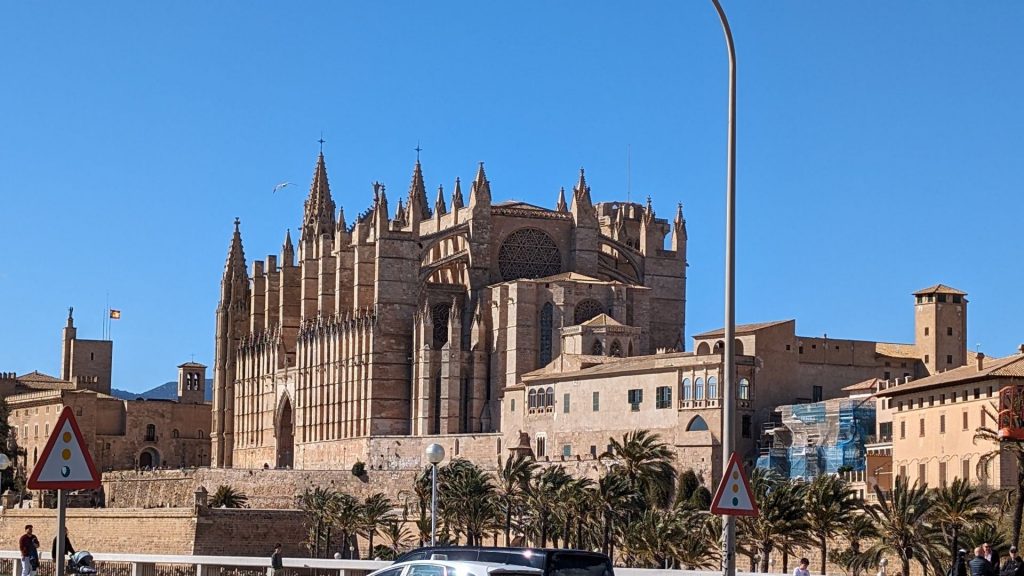
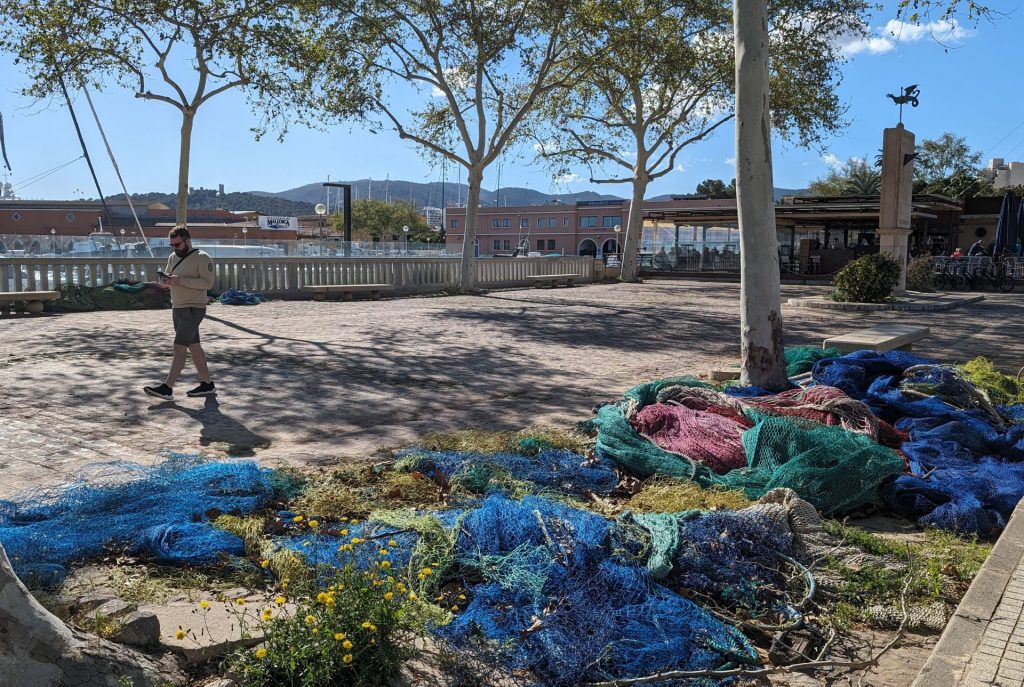
Michael was in the mood for seafood so we decided to eat dinner at the restaurant by our marina. Sadly, he couldn’t get what he wanted so he had steak. I had this really intriguing salad. Happily, it had quite a few big shrimp in it, so I gave three to Michael. He got at least a tiny amount of seafood!
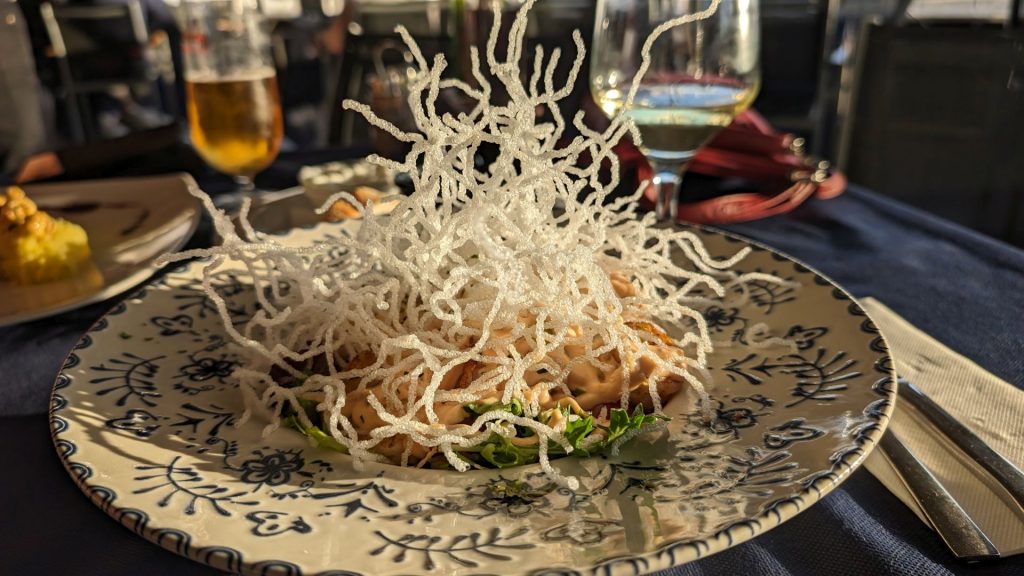
We left Palma the next day. More on that in the next post.
